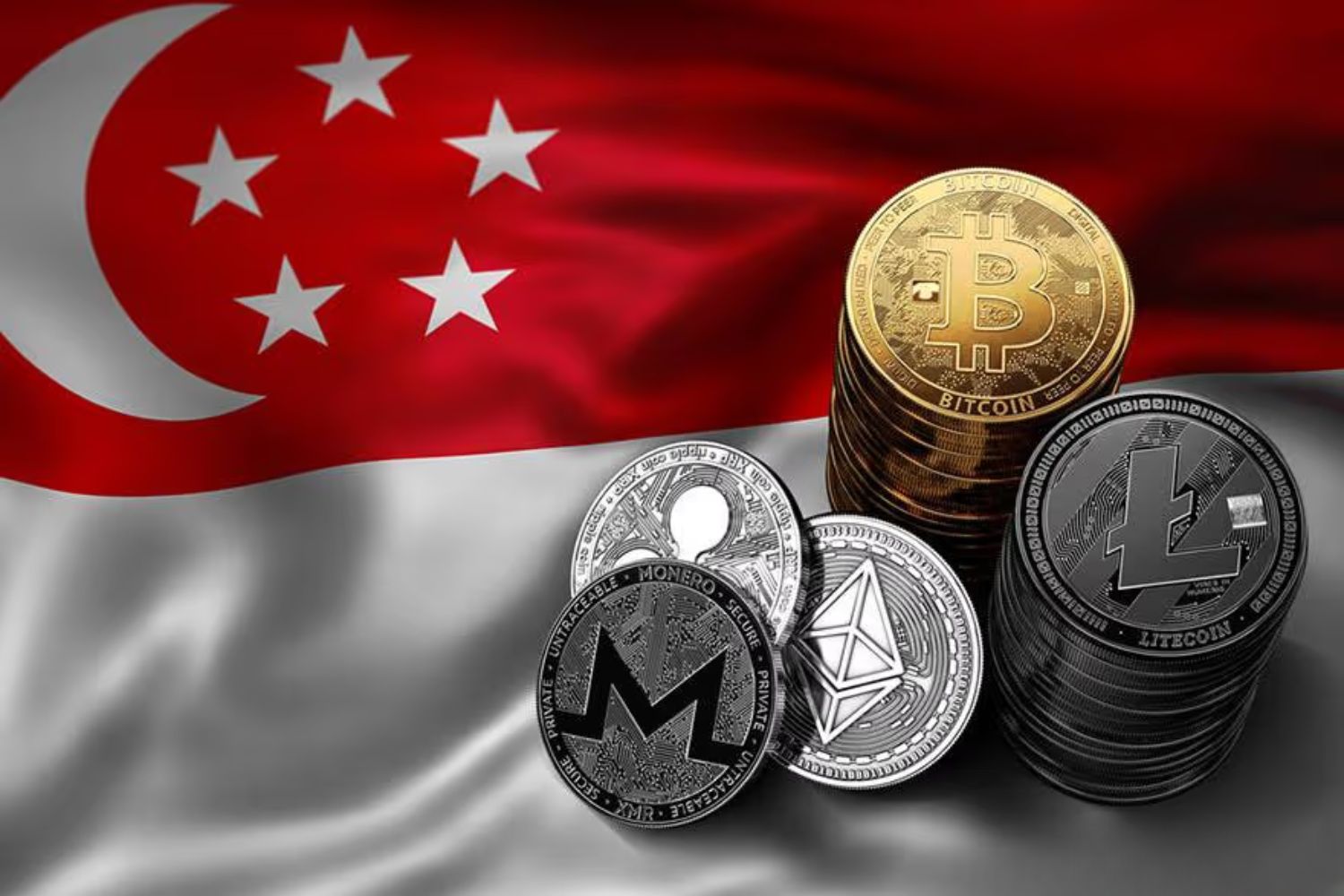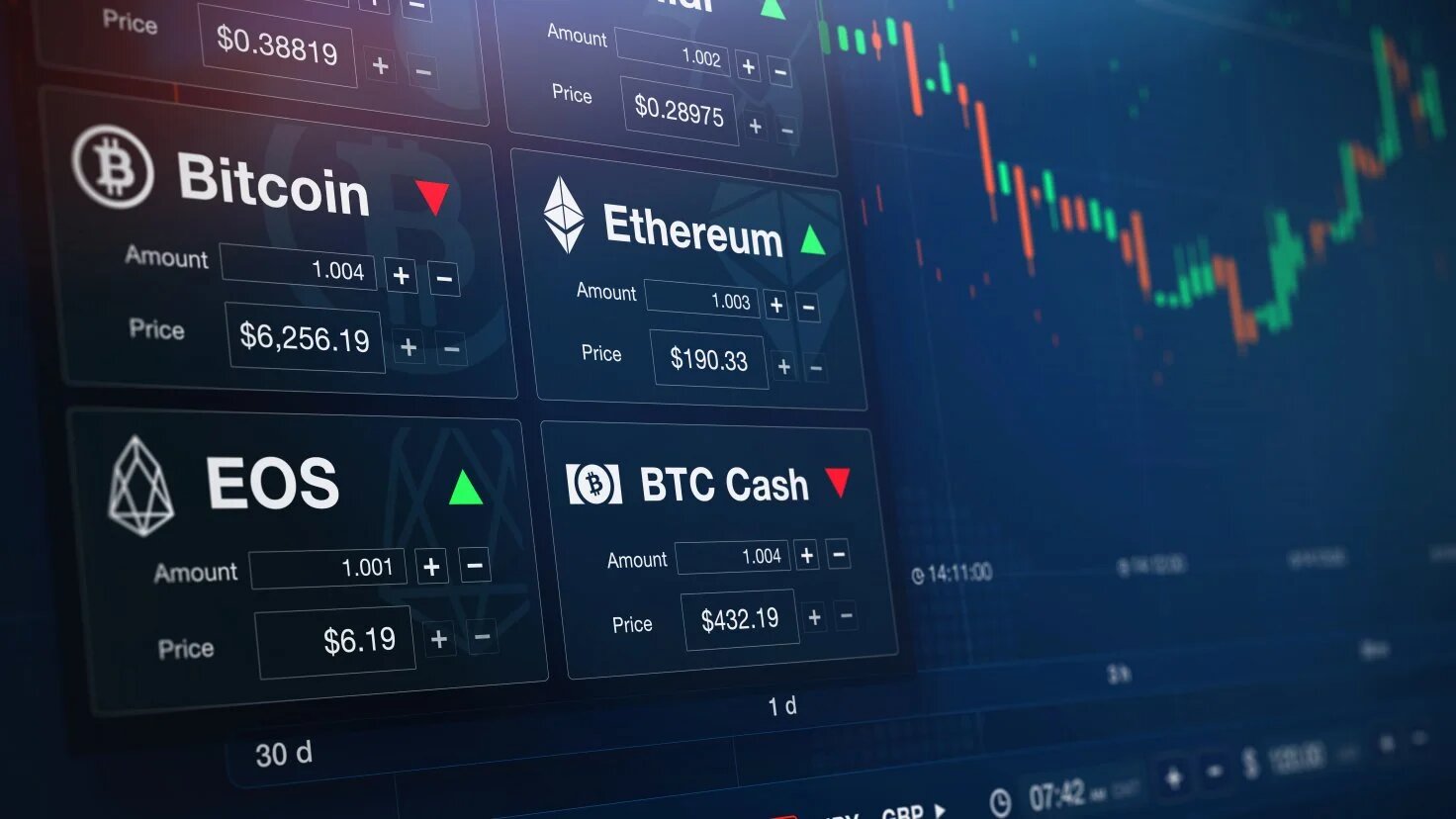Introduction
Welcome to the world of cryptocurrency trading in Singapore! If you own Bitcoin and are looking to sell it for cash or other digital assets, you’ve come to the right place. Selling Bitcoin in Singapore is relatively straightforward, thanks to the country’s advanced financial infrastructure and thriving cryptocurrency ecosystem.
In this guide, we will walk you through the steps to sell Bitcoin in Singapore, whether you prefer peer-to-peer (P2P) trading or using a cryptocurrency exchange. We’ll also provide some valuable tips to help you make the most of your selling experience.
Before we dive into the details, it’s essential to have a basic understanding of Bitcoin. Bitcoin is the most well-known and valuable cryptocurrency globally, and it operates on a decentralized network called blockchain. Bitcoin can be bought or sold, and it offers a secure and transparent way to transfer value between individuals.
Now, let’s explore the steps involved in selling Bitcoin in Singapore.
Step 1: Setting up a Bitcoin Wallet
Before you can sell Bitcoin in Singapore, you’ll need to have a Bitcoin wallet. A wallet is essential for storing, sending, and receiving Bitcoin securely.
There are various types of Bitcoin wallets available, including:
- Software wallets: These are applications that you can install on your computer or smartphone. Examples include Electrum, Exodus, and Mycelium.
- Hardware wallets: These are physical devices that store your Bitcoin offline, providing an extra layer of security. Popular hardware wallets include Ledger and Trezor.
- Web wallets: These wallets are online-based and can be accessed through a web browser. Blockchain.com and Coinbase are well-known examples of web wallets.
When choosing a wallet, consider factors such as ease of use, security features, and compatibility with your devices. It’s important to select a wallet with a good reputation and a track record of providing excellent security measures.
Once you’ve decided on a wallet, you’ll need to create an account and generate a Bitcoin address. A Bitcoin address is a unique identifier that allows you to receive Bitcoin into your wallet. Make sure to keep your wallet recovery phrase or seed phrase stored in a safe place. This recovery phrase is crucial for restoring access to your wallet in case of loss or damage to your device.
Remember, maintaining the security of your Bitcoin wallet is of utmost importance. Ensure that you set up two-factor authentication (2FA) to add an extra layer of protection to your wallet.
Now that you have your Bitcoin wallet set up, you’re ready to move on to the next step: choosing a Bitcoin exchange or P2P platform to sell your Bitcoin.
Step 2: Choosing a Bitcoin Exchange
When it comes to selling Bitcoin in Singapore, you have the option to use a Bitcoin exchange. A Bitcoin exchange is an online platform where buyers and sellers can trade Bitcoin for fiat currency or other digital assets.
Choosing the right Bitcoin exchange is crucial as it can impact the price you receive for your Bitcoin, the ease of the selling process, and the security of your funds. Here are a few factors to consider when selecting a Bitcoin exchange:
- Reputation and Security: Look for exchanges with a solid reputation and a strong security track record. Check if the exchange has experienced any security breaches in the past and what measures they have in place to protect user funds.
- Trading Fees: Exchanges charge fees for executing trades, so it’s essential to understand their fee structure. Compare the fees across different exchanges to find the most cost-effective option.
- Liquidity: Consider the exchange’s liquidity, which refers to its ability to execute trades quickly. Exchanges with high liquidity tend to have better prices and faster transactions.
- User Interface and Experience: Evaluate the exchange’s user interface and overall user experience. A user-friendly platform can make the selling process smoother and more intuitive.
- Supported Currencies: Check the exchange’s supported currencies to ensure it offers the trading pairs you’re interested in. Some exchanges may only support Bitcoin-to-fiat trades, while others offer a broader range of cryptocurrency pairs.
Popular Bitcoin exchanges in Singapore include Coinhako, Luno, and Coinut. Take the time to research and compare different exchanges based on your preferences and requirements.
Alternatively, if you prefer a more direct approach, you can consider selling your Bitcoin through a peer-to-peer (P2P) platform. P2P platforms connect buyers and sellers directly, eliminating the need for an intermediary. This can provide more flexibility and potentially better prices for your Bitcoin. Popular P2P platforms in Singapore include LocalBitcoins and Paxful.
Once you’ve selected a Bitcoin exchange or P2P platform, it’s time to move on to the next step: verifying your identity.
Step 3: Verifying Your Identity
Before you can start selling Bitcoin on a Bitcoin exchange or P2P platform in Singapore, you’ll usually need to go through a verification process. This verification process is in place to comply with local regulations and ensure the security of the platform.
The exact requirements for identity verification may vary depending on the platform you choose. However, the following information/documents are commonly required:
- Personal Information: You’ll typically need to provide your full name, date of birth, and contact details.
- Proof of Identity: A valid government-issued identification document, such as a passport or national ID card, is usually required.
- Proof of Address: Some platforms may require proof of your residential address, which can be provided through utility bills, bank statements, or similar documents.
- Selfie or Photo: You might be asked to provide a recent photo or take a selfie to verify your identity.
It’s important to ensure that the information you provide during the verification process matches your Bitcoin exchange or P2P platform account details. Any discrepancies could result in delays or even the rejection of your verification.
Once you’ve submitted the required information, the platform will review and verify it, usually within a few hours or days. Some platforms may require additional steps, such as video verification or answering security questions, to complete the process.
Remember, the verification process is a necessary step to ensure the legitimacy and security of the Bitcoin marketplace. While it may seem tedious, it helps create a safer trading environment for both buyers and sellers.
After successfully verifying your identity, you’re ready to move on to the next step: selling your Bitcoin on either a P2P platform or a cryptocurrency exchange. We’ll explore both options in the following steps.
Step 4: Selling Bitcoin on a P2P Platform
If you prefer a more direct approach to selling your Bitcoin, you can consider using a peer-to-peer (P2P) platform. P2P platforms connect buyers and sellers directly, allowing you to negotiate the terms of the trade and potentially get a better price for your Bitcoin.
Here’s how you can sell Bitcoin on a P2P platform:
- Create an Account: Sign up for an account on a reputable P2P platform, such as LocalBitcoins or Paxful. Enter your required details and proceed to the verification process, if necessary.
- Create a Selling Offer: Once your account is set up, you can create a selling offer. Specify the amount of Bitcoin you want to sell, the desired payment method, and any additional terms or requirements.
- Browse Existing Buy Offers: Take a look at the existing buy offers on the platform. Review the offers based on the buyer’s reputation, payment method, and any other criteria important to you.
- Negotiate the Trade: Initiate a trade with a potential buyer by selecting their offer. Use the platform’s messaging system to discuss the terms of the trade, including the Bitcoin price, payment details, and any necessary verification requirements.
- Finalize the Trade: Once you and the buyer have agreed on the terms, follow the platform’s instructions to transfer your Bitcoin to the provided escrow account. The buyer will then make the payment according to your agreed-upon method.
- Release Bitcoin and Complete the Trade: After confirming the payment, release the Bitcoin from the escrow to the buyer’s wallet. Make sure to mark the trade as complete on the platform to finalize the transaction.
It’s important to exercise caution when selling Bitcoin on a P2P platform. Always verify the buyer’s reputation and trading history before initiating a trade. Look for buyers with a high feedback score and a good track record.
Furthermore, consider using escrow services provided by the P2P platform. Escrow helps ensure a secure transaction by holding the Bitcoin in a neutral account until both parties fulfill their obligations.
Selling Bitcoin on a P2P platform can offer flexibility and potentially better prices compared to traditional exchanges. However, be prepared to spend time negotiating and communicating with potential buyers to find the best deal.
Next, we’ll explore the option of selling Bitcoin on a cryptocurrency exchange, which offers a simpler and more automated selling process.
Step 5: Selling Bitcoin on a Cryptocurrency Exchange
If you prefer a more streamlined and automated process for selling your Bitcoin, using a cryptocurrency exchange is a popular option. Cryptocurrency exchanges provide a platform where you can list your Bitcoin for sale and match it with potential buyers.
Here’s how you can sell Bitcoin on a cryptocurrency exchange:
- Create an Account: Sign up for an account on a reputable cryptocurrency exchange that operates in Singapore. Popular options include Coinhako, Luno, and Coinut. Complete the registration process and verify your identity, if required.
- Deposit Bitcoin: After creating your account, navigate to the deposit section and generate a Bitcoin deposit address. Transfer your Bitcoin from your wallet to this address. The exchange will credit your account with the deposited Bitcoin.
- Place a Sell Order: Once your Bitcoin is deposited, proceed to the trading section of the exchange. Create a sell order by specifying the amount of Bitcoin you wish to sell and the desired price per Bitcoin. Alternatively, you can choose to sell at the market price.
- Review and Confirm: Take a moment to review your sell order, making sure the details are accurate. Confirm the order, and it will be listed on the exchange’s order book.
- Matching and Execution: Your sell order will wait in the order book until a buyer matches it or accepts your asking price. Once a match occurs, the trade will be executed, and the Bitcoin will be transferred from your account to the buyer’s account.
- Withdraw Funds: After the trade is completed, you can withdraw your funds from the exchange. Visit the withdrawal section and provide the necessary details, such as your bank account information or address for digital asset withdrawals.
Using a cryptocurrency exchange offers the advantage of a more automated and efficient selling process. However, keep in mind that there may be fees associated with trading on the exchange, such as transaction fees and withdrawal fees.
Before choosing a cryptocurrency exchange, consider factors like reputation, security measures, trading volume, and supported currency pairs. Research and compare different exchanges to find the one that best meets your needs and offers competitive pricing.
Now that you’re familiar with selling Bitcoin on a cryptocurrency exchange, it’s time to proceed to the next step: deciding the selling price for your Bitcoin.
Step 6: Deciding the Selling Price
When selling Bitcoin, one of the most critical decisions you’ll need to make is determining the selling price. The selling price will directly impact the amount of fiat currency or other digital assets you receive in exchange for your Bitcoin.
Here are some factors to consider when deciding the selling price:
- Market Conditions: Take into account the current market conditions and the prevailing price of Bitcoin. You can monitor cryptocurrency news sources or websites to stay updated on the latest Bitcoin price movements.
- Exchange Rates: If you’re selling Bitcoin for a fiat currency, consider the exchange rate between Bitcoin and that particular currency. You can use cryptocurrency exchange platforms to find the current exchange rate.
- Competition: Analyze the prices of other sellers on the platform or exchange you’re using. Check the order book and observe the selling prices offered by other sellers. This can give you an idea of the current market demand and help you set a competitive price.
- Trade Volume: Consider the volume of Bitcoin you’re selling. Larger quantities may require you to adjust the selling price to attract buyers, while smaller quantities may give you more flexibility in setting the price.
- Profit Margin: Determine the profit margin you’re aiming for. Consider the investment you made when acquiring the Bitcoin and the desired return on that investment.
- Flexible Pricing: Keep in mind that you can adjust the selling price if you’re not attracting buyers or if you receive multiple inquiries. Being open to negotiation can help facilitate a successful sale.
Remember, finding the right selling price is a balance between maximizing your profit and attracting potential buyers. It’s important to stay informed about the market conditions and maintain a realistic expectation of the price you can achieve for your Bitcoin.
Once you’ve determined the selling price, you’re ready to move on to the next step: completing the transaction.
Step 7: Completing the Transaction
Once you’ve found a buyer and agreed upon the selling price, it’s time to complete the transaction and transfer your Bitcoin to the buyer. Completing the transaction successfully involves a few important steps:
- Payment Confirmation: Before transferring your Bitcoin, ensure that you have received payment from the buyer. If you’re using a P2P platform, carefully confirm that the payment has been made and verified according to the agreed-upon terms.
- Transfer Bitcoin: Once you’ve confirmed the payment, initiate the transfer of your Bitcoin. If you’re using a cryptocurrency exchange, follow their instructions to send the Bitcoin from your account to the buyer’s account.
- Confirmation and Tracking: After transferring the Bitcoin, keep track of the transaction’s progress. Most blockchain networks provide transaction IDs or hashes that can be used to track the status of the transfer. Share this information with the buyer, if required.
- Communication: Maintain clear communication with the buyer throughout the process. Provide any necessary updates on the status of the transfer and address any concerns or questions that may arise.
- Completion Confirmation: Once the buyer has received the Bitcoin and is satisfied with the transaction, ask them to confirm the completion of the transaction on the platform or exchange. This helps finalize the sale and provides a record of the successful transaction.
It’s crucial to exercise caution during the transaction and be aware of potential risks, such as fraudulent buyers or attempts to reverse the payment after receiving the Bitcoin. Use platforms that offer escrow services or built-in dispute resolution mechanisms to add an extra layer of security to your transaction.
By completing these steps carefully and ensuring open and transparent communication with the buyer, you can successfully conclude the Bitcoin transaction.
Now that the transaction is complete, it’s time to proceed to the final step: withdrawing your funds.
Step 8: Withdrawing Your Funds
After successfully selling your Bitcoin and completing the transaction, you may want to withdraw the funds you received from the sale. The process of withdrawing your funds will vary depending on the platform or exchange you used to sell your Bitcoin.
Here are the general steps to withdraw your funds:
- Choose a Withdrawal Method: Determine the withdrawal method you prefer, such as a bank transfer or a digital asset wallet.
- Verify Your Account (if necessary): Some platforms or exchanges may require you to complete additional verification steps, such as providing your bank account details or cryptocurrency wallet address, before initiating a withdrawal.
- Enter Withdrawal Details: Once your account is verified, navigate to the withdrawal section of the platform or exchange. Enter the necessary details, such as your bank account information or wallet address, and the amount of funds you wish to withdraw.
- Review and Confirm: Double-check the withdrawal details for accuracy, including the recipient information and the withdrawal amount. Confirm the withdrawal request.
- Processing and Completion: The platform or exchange will process your withdrawal request. The time it takes for the funds to be transferred to your bank account or digital wallet will depend on the specific platform’s processing times and the withdrawal method you chose.
It’s important to note that some platforms may charge withdrawal fees, so be sure to review the fee structure before initiating the withdrawal. Additionally, keep in mind that withdrawal processing times can vary, ranging from a few hours to several business days.
By following these steps, you’ll be able to withdraw the funds you received from selling your Bitcoin. Ensure that you securely store your funds in a trusted bank account or digital wallet.
Congratulations! You have successfully sold your Bitcoin and withdrawn the proceeds. Now you can make use of your funds as desired.
Conclusion
Congratulations on learning how to sell Bitcoin in Singapore! By following the steps outlined in this guide, you should now have a clear understanding of the process and be well-equipped to sell your Bitcoin with confidence.
Remember, before selling Bitcoin, it’s important to set up a secure Bitcoin wallet to store your digital assets. Choose a reputable Bitcoin exchange or consider selling through a peer-to-peer platform, depending on your preferences. Verify your identity to comply with regulations and enhance the security of the trading process.
When deciding the selling price, consider market conditions, exchange rates, competition, and your own profit margin. Then, complete the transaction by ensuring payment confirmation, transferring the Bitcoin to the buyer, and confirming the completion of the transaction.
Finally, once the transaction is complete, you can withdraw your funds by selecting a suitable withdrawal method and providing the necessary details for the transfer.
Throughout the process, it’s essential to prioritize security, maintain clear communication, and exercise caution to protect yourself from potential risks and fraudulent activities.
We hope this guide has been helpful in your journey to sell Bitcoin in Singapore. Remember to stay informed about the latest trends and developments in the cryptocurrency market, as it can influence the dynamics of buying and selling Bitcoin.
Now, armed with the knowledge gained from this guide, you are ready to embark on your selling journey and make the most of your Bitcoin investment. Good luck!

























